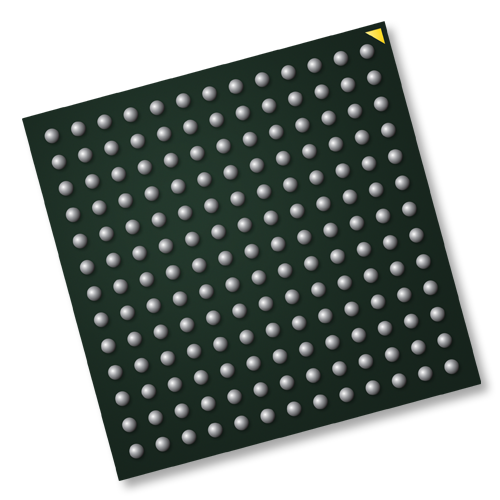

-
SKUOAX4010-B69G-1B-Z
OAX4010-B69G-TB-Z -
Package169-pin BGA
169-pin BGA -
DetailPacked in tray
Packed in tape and reel
Automotive Image Signal Processor Featuring Industry's Leading LED Flicker Mitigation and HDR Over Automotive Temperature Range
OMNIVISION’s OAX4010 automotive image signal processor (ISP) features the new HDR and LFM Engine (HALE) combination algorithm. The on-chip LFM and HDR solution uses a proprietary method to simultaneously provide 120 dB HDR and industry’s leading LFM for automotive viewing systems, giving drivers a better picture of their surroundings. When the OAX4010 is paired with OMNIVISION’s OX01A10 and OX02A10, this combination offers the most compact solution in the industry for the smallest possible camera footprint. It can process the images from one camera at 60 fps or two cameras at 30 fps, which reduces the number of ISPs required for surround-view system (SVS) cameras by 50%.
The OAX4010 can be utilized for a wide range of automotive imaging applications, including rear-view cameras, e-mirrors and SVS. Its ability to provide LFM and HDR at high temperatures is important because applications like e-mirrors are often running continuously in extreme temperature conditions. It also enables the emerging AR camera systems to overlay real-time images on GPS navigation displays, which requires LED traffic signs and signals to be flicker-free. Additionally, this new ISP is pin-to-pin compatible with OMNIVISION’s previous generation ISPs, providing an easy migration path to improved LFM and HDR performance with faster time to market. The OAX4010’s combination of the industry’s leading LFM and HDR also allows Tier‑1 automotive manufacturers to design one camera that can be used in both SVS and e-mirrors. This creates greater economies of scale as a single camera platform can be deployed in multiple CMS applications.
The OAX4010 has an advanced set of safety mechanisms to enable advanced ASIL camera systems and was developed under the ISO26262 compliant process. This image sensor is AEC-Q100 Grade 2 certified and ASPICE CL‑2 for automotive applications. Samples are available now.
Up to 2‑megapixel sensor (1920 x 1080 or 1824 x 940) @ 60 fps with MIPI output and up to 60 fps with DVP output (3.3V I/O, 16‑bit/24‑bit mode)
Supports two sensor input through two 2‑lane MIPI interfaces or one 4‑lane MIPI interface
Supports one sensor input through 4/2/1‑lane MIPI interface
Supports two 2‑lane MIPI‑TX interfaces to output video stream
Supports 4‑lane MIPI‑TX interface to output video stream
HDR and LFM engine (HALE
Local and global tone mapping support
Automatic white balance (AWB), automatic exposure control (AEC) / automatic gain control (AGC), 50/60 Hz auto flicker detection and elimination
Statistics data of up to four user programmable ROIs
Distortion correction (DC) up to 180° HFOV
Four independent overlay layers and line/arc layers, 32 color/palette per image, line and global transparency control for each layer
Embedded information, including frame counter, temperature, and register data, for each image to enable critical automotive safety applications
Up to eight GPIOs
1K bits of one-time programmable memory (OTP)
Brown-out detection circuit and output flag
JTAG boundary scan
Serial camera control bus (SCCB) master/slave interface for sensor and ASIC configuration
Up to four-wire SPI flash interface to retrieve stored firmware and data from external SPI flash memory
On-chip DCDC from 1.8V to 1.1V
-
SpecOAX4010
-
CategoryAutomotive Companion Chip
-
Highest Frame Rate60 fps
-
Output FormatBT1120 16-bit, BT656 8-bit, RGB565 16-bit, RGB888 24-bit, YUV422 8/10/12-bit
-
PackageBGA
-
Recommended ArchitecturesCMS, RVC, SVS
-
Sensor ResolutionUp to 2MP
